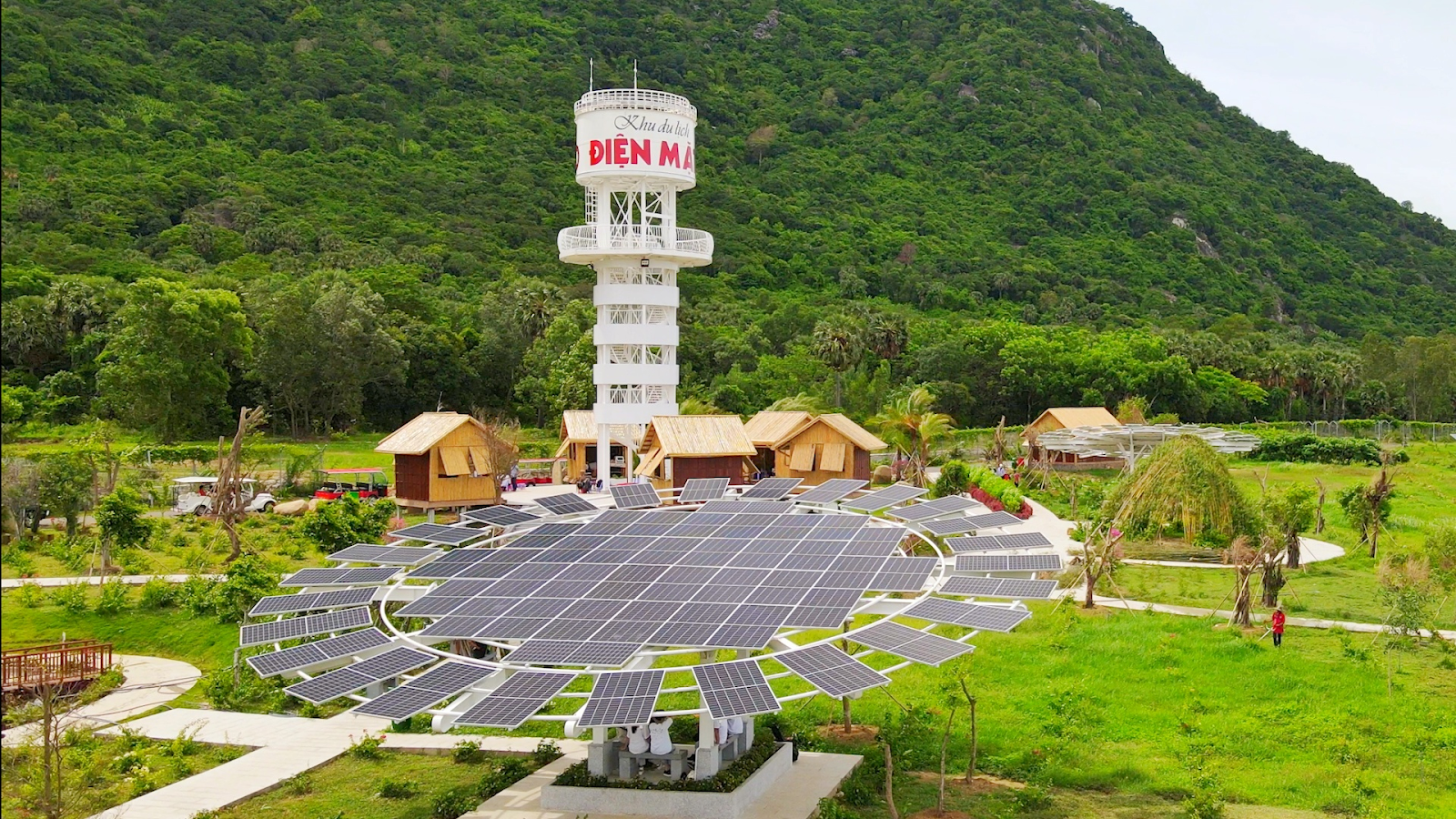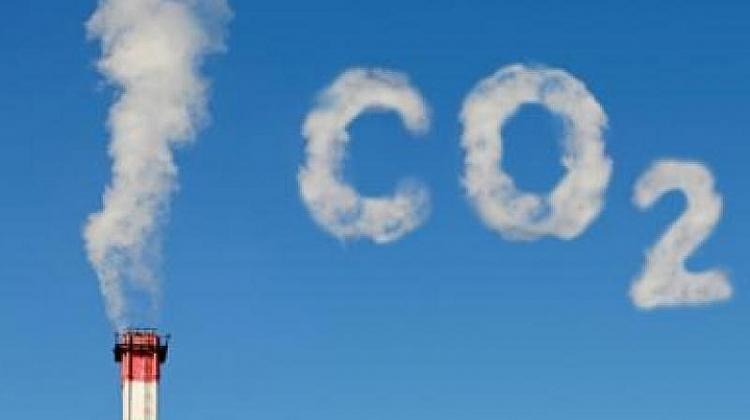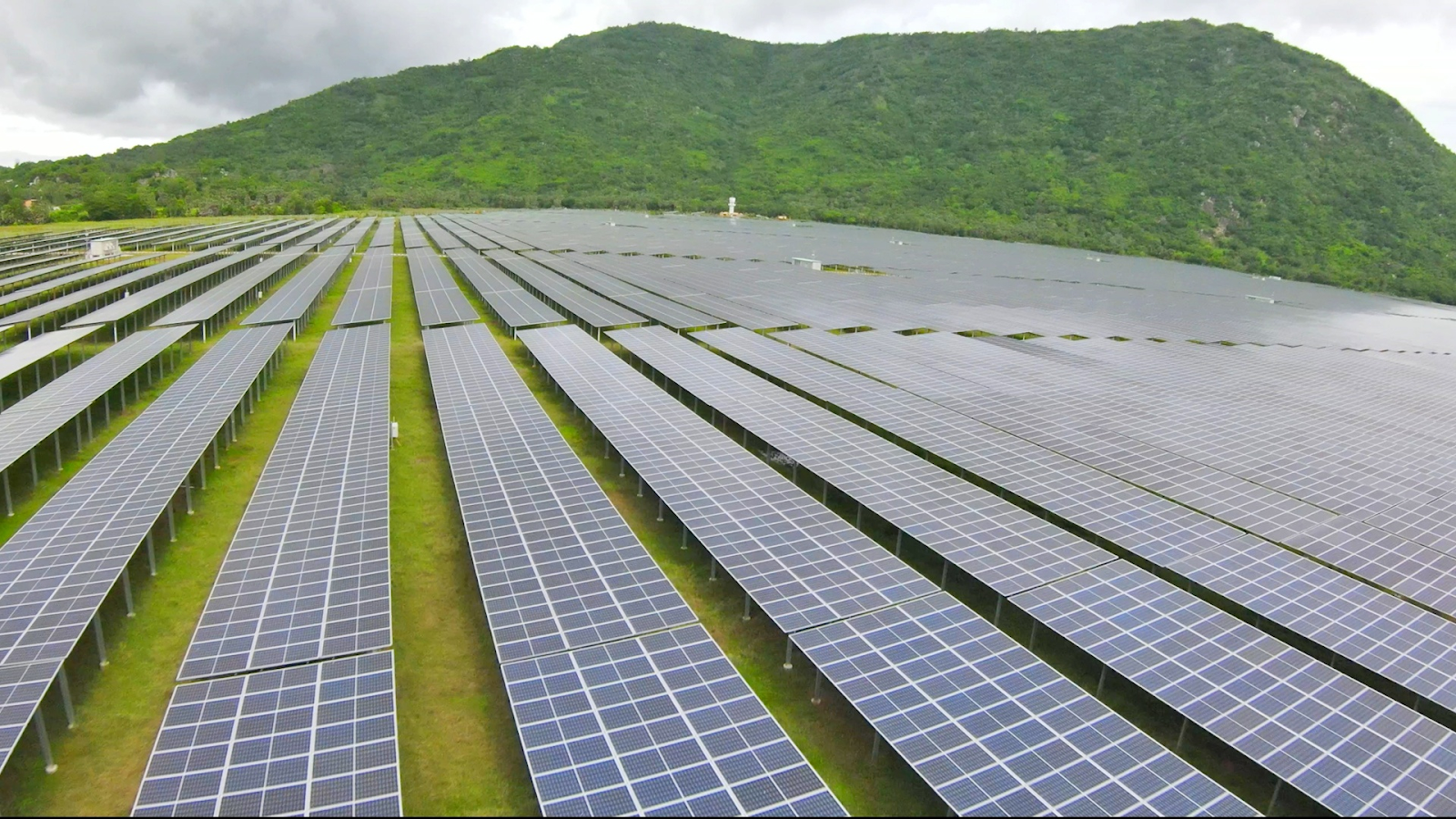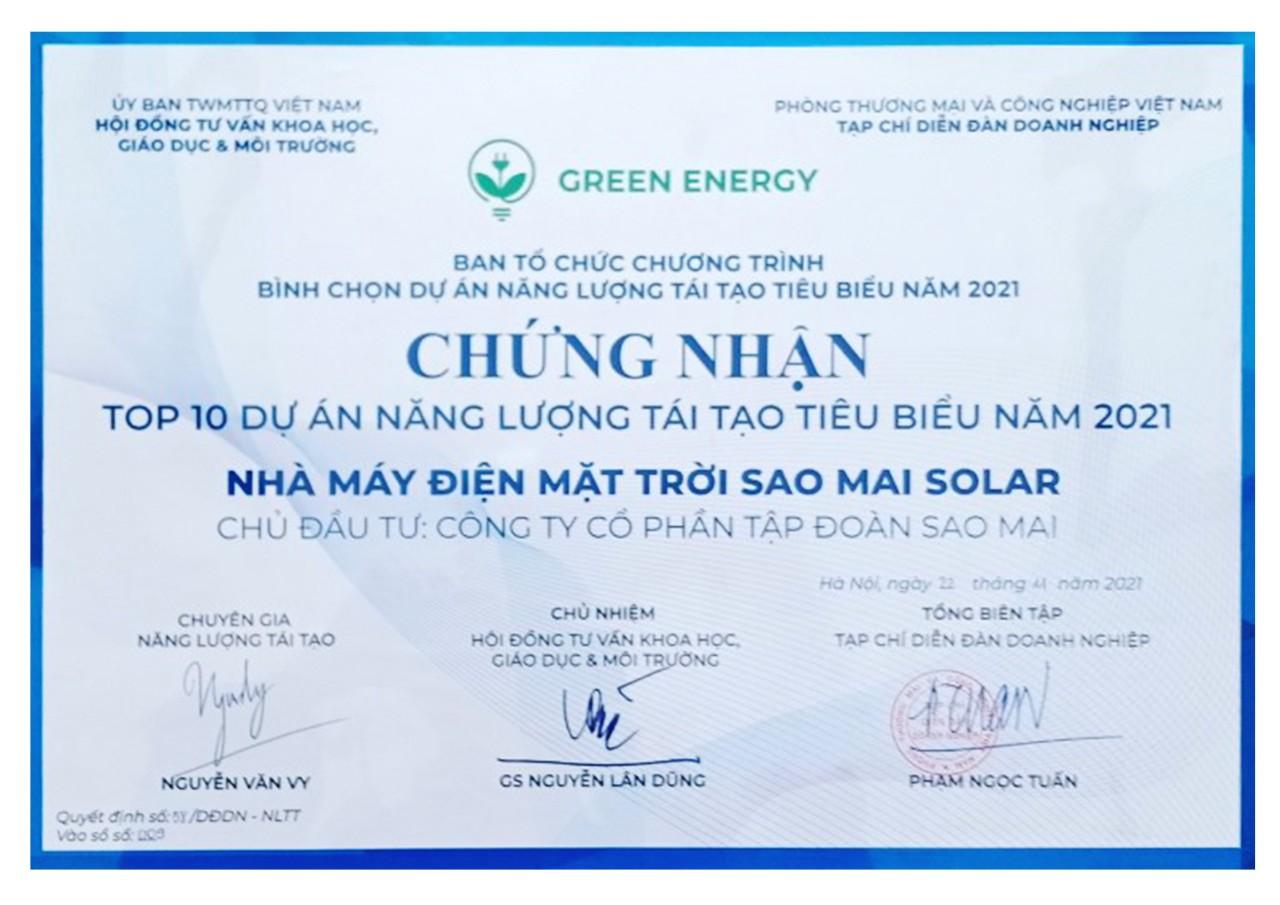REDUCING COAL, INCREASING RENEWABLES
Renewable energy has gained attention in the Power Development Plan VIII (latest version from November 2021) after three revisions. The necessary condition to achieve the goal of "net zero emissions by 2050" is to completely eliminate all new coal power projects after 2021 and gradually close operating coal power plants.
The rise of renewable energy as coal power declines
Investing in renewable energy is essential for global power development. Notably, in 2020, new installed power capacity from renewable energy accounted for 83%, while fossil fuels and nuclear energy made up only 17%. This shows that coal power is gradually declining and making way for clean energy, aligning with the global future energy development trend.

An Hảo Ecotourism Area – a twin project of Sao Mai Solar Power Plant
Several Asian countries, including Indonesia, Bangladesh, and the Philippines, have announced they are canceling or reviewing new coal power projects. Japan and South Korea have both committed to achieving net-zero emissions by 2050, even before COP26. According to GEM, in the context of difficulty raising funds for coal power projects and the decreasing costs of renewable energy investment, coal projects are facing further delays and may even become financially unfeasible.
Eliminate the furnace, Photo: Contributor
Coal power: The culprit threatening the “net zero emissions” ambition
While the world is moving away from coal power, Vietnam and China are doing the opposite.
Ten years ago, coal power played a minor role in Vietnam’s national grid, contributing only 17.6% of the total output, far behind gas power (49.4%) and hydropower (30.1%). However, after a decade of continuous capacity expansion, coal power now dominates in Vietnam, contributing 52.9% of the electricity output, surpassing hydropower (25.5%) and reducing gas power to a secondary role (15.7%).

A legacy of coal power with long-lasting consequences
Vietnam’s coal power output is now 1.6 times the global average (52.9% compared to 33.8%), while wind and solar power account for only about half of the global average (5.4% compared to 9.4%). The continuous expansion of coal power capacity has made Vietnam a "coal power giant," even though the country's electricity system ranks only 23rd in the world.
With the proposal to build 27 new coal power plants in the next 15 years (as per the October version of Power Development Plan VIII), Vietnam's greenhouse gas emissions will continue to increase. It is estimated that by 2045, emissions will reach 350 million tons of CO2, making it clear that the goal of reducing such massive emissions to zero by 2050 is unrealistic.

The blue sky calls for help
In October 2021, over 200 scientists and renewable energy businesses sent a letter to the Prime Minister regarding Power Development Plan VIII, expressing their hope that the government will carefully consider creating a “green and clean” plan for the global power system.

Clean energy is an inevitable replacement for depleting fossil fuels
What mechanisms support renewable energy development?
Hà Đăng Sơn, Director of the Center for Energy and Green Growth Research, added that to achieve net-zero emissions by 2050, Vietnam will need significant investments in energy storage and power transmission while also encouraging businesses to invest in renewable energy.

A renewable energy investor being rightfully honored
"Vietnam possesses an endless green energy resource that costs nothing to buy. If we know how to exploit and use it efficiently, we can easily ensure national energy security. Genuine attention will certainly unlock the internal potential of Vietnamese businesses. The government doesn't need to fund businesses directly; with good, transparent policies, we will reap enormous benefits for the nation, ensuring sustainable development for the country," shared a representative of a major economic group in the South through the media.

















